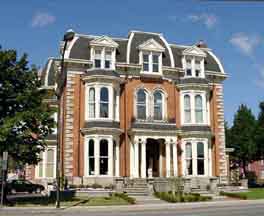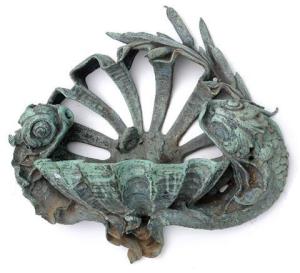Second Empire, Rococo Revival:
developed in France second empire is an international architectural style (mansard roof, pavilions, bold details)
in Europe and America the style is elegant, sophisticated, cosmopolitanism
Rococo Revival- based on French Rococo (18 century)
curving forms and feminine grace make it suitable for parlors, drawing rooms, boudoirs
Concepts:
Second Empire- expression of sophistication, cosmopolitanism, and french culture
England and America coincides with build boom and economic prosperity making the style symbolize affluence, elegance, sophisticated taste, authority, and power
Rococo Revival- depicts French look with noble tastes making it popular for home decoration in Western countries
portrays feminine character advanced with elegance
Motifs:
S.E.- columns, swags, cartouches, pediments, relief sculpture
R.R- female mask, vines, shells, roses, flowers, leaves, acorns, nuts
Architecture:
Second Empire- reflecting contemporary architectural developments in France
transform the city into a modern, elegant metropolis
clude wall and/or roof dormers, hood moldings, round arches, stringcourses, column, high-relief sculpture, and classical details
Materials- stone, granite, marble, brownstone, brick, and iron details
Interiors:
Second Empire- created for Napoleon III in Louvre and Tuileries
keep the majestic second empire image
display bold classical architectural details
Rococo Revival- style rooms appear in Greek Revival, Renaissance Revival, Italianate, and Second EMpire buildings
combine French Baroque and French ROcoco
bolder, more symmetrical, and more sculptural
Furniture:
Rococo Revival- curving silhouette, C and S scrolls cabriole legs, naturalistic ornament, larger and heavier with symmetrical, carved decoration
parts have elements that flow together with little interruption and no articulation
flamboyant curving and carved silhouettes
Materials- dark woods, costly woods are rosewood and mahogany, other pieces are walnut or maple, veneers are often used










Leave a comment